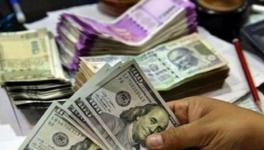Current Inflationary Upsurge in India a Centrally-administered Phenomenon
The official wholesale price index for March 2021, which was released a few days ago shows it to be 7.39% higher than for March 2020. Such a high rate of inflation has not been seen in India for over eight years. It was only in October 2012 that the country had witnessed a 7.4% inflation over the corresponding month of the previous year.
The Union government while releasing the index cautioned that since the country had witnessed a strict lockdown a year ago, the base figure on which inflation was being calculated was suspect, an underestimate based on insufficient response in the base period. Even this argument, however, can provide little comfort: the inflation rate in March 2021, compared to the previous month, February 2021, comes to a whopping 1.57%.
We are clearly witnessing an inflationary upsurge. And it has been building up for some time: it was 2.51% in January (over the previous January), and 4.17% in February. The question is: why are we having this upsurge?
There is massive unemployment in the country and equally massive idle productive capacity. There are also substantial foodgrain stocks with the government. The economy in short continues to be demand-constrained and there is no question of any inflation arising because of a general shortage. There may be some specific temporary shortages here and there, but they would not explain a sustained inflationary episode, and that, too, on such a scale.
An inflationary upsurge in a demand-constrained system can arise only because of an increase in costs; and this is precisely what has happened. The rise in costs that is felt across the board is essentially because of a set of administrative decisions by the Union government, which is why the current upsurge in inflation can be called a centrally-administered phenomenon. Not that the Centre necessarily wanted inflation of this precise order, but the phenomenon is the result of the central government’s deliberate and conscious actions. Calling the current inflation a centrally-administered inflation captures this reality.
Also read: Modi Govt and Its Lack of Concern for the Working Class
The most important factor behind this inflation is the central government’s decision to raise petro-product prices. Initially, the central government pursued a policy of not lowering petro-product prices when the world oil prices came down and passing on the increase in world oil prices when they started increasing. This itself gives an upward thrust to petro-product prices. But then it has gone even further. It has started raising petro-product prices even when world oil prices have come down and remain low.
The second thing it has done is to cut down subsidies. When the cost of production of domestic petro-products, such as fertilisers for instance, go up, the central government used to prevent an increase in the prices charged to the farmers by increasing the fertiliser subsidy. But now, whenever there is a rise in the cost of production, not because of any rise in world oil prices but because of the government’s own decision to jack it up, it lets the farmers bear the entire burden of this increase. And since, at the same time there is no corresponding increase in the minimum support price of their products for the farmers, government policy amounts to a combination of stoking inflation and decimating the viability of peasant agriculture.
It is not surprising that the wholesale price index for the “fuel and power” segment rose by 10.25% compared to a year ago, with LPG prices rising by 10.30% and petrol prices by 18.48%. Since petroleum and petro-products are universal intermediaries, entering into the prices of every product, they would have given an upward push to manufactured goods prices, too, which increased by 7.34%.
The jacking up of prices of a universal intermediary while at the same time cutting down on subsidies that could potentially insulate segments of the working people from the acceleration of inflation is proof of the fact that it is the central government’s fiscal stance that underlies this inflation. The government in short has decided to adopt an administered inflation as its preferred fiscal strategy.
To see the implications of such an administered-inflation- based fiscal strategy, consider the following. (We shall be making in what follows the simplifying and by no means unrealistic assumption that the working people consume whatever they earn). If there is an economy where output is constrained by insufficient demand, and the government simply spends by borrowing from banks ( i.e., runs a fiscal deficit), then there would be an increase in output and employment. The resources for government spending, in short, would have come not by reducing anyone’s spending (on the contrary such spending would increase) but by utilising hitherto unutilised resources.
There would not be any increase in income inequality (since the share of profits would not necessarily increase when more output is produced). But, there would be an increase in wealth inequality, since additional savings (and hence additional wealth) would accrue to the rich, and that, too, for doing nothing. This, however, can be taken care of by levying an equivalent wealth tax, or a profit tax on them (in which case, of course, the fiscal deficit will disappear). Mopping up such additional savings through wealth or profit taxes would not alter the fact that the resources for government spending would have come from utilising unused productive capacity and not at the expense of anyone’s actual spending; at the same time, however, there would be no increase in either wealth or income inequality.
Also read: Modi Govt’s Move to Sell PSU Assets and not Impose Wealth Tax is Shameful
Now imagine an alternative scenario. Suppose the government resorts to administered inflation, as it is doing, for raising the funds for its spending. Since money earnings of the working people do not increase while prices do, their real earnings fall. Such a manner of raising resources, therefore, necessarily squeezes the working people. Their consumption falls, and the resources released by such a fall are then used by the government when it undertakes larger spending. There is no net increase in aggregate demand, and hence in output, employment and capacity utilisation in the economy, because of government action.
This second manner of resource mobilisation, in contrast to the first (with equivalent wealth or profit taxation), increases the level of income inequality (since private surpluses do not go down while the real income of the working people does), impoverishes the working people, and does not even revive the economy. It is thus the worst possible course in every conceivable way. It is also the most mindless course, since an economy with unutilised capacity and unemployment is one where something can be had for nothing, and the possibility of this, which would also increase employment and hence general well-being, gets subverted. The policy of administered inflation being followed by the Modi government in short is an utterly mindless and harmful course.
But then why is it being followed, when an alternative policy of reviving the economy through government spending could have been followed? A part of the answer of course is the Modi government’s own mindlessness. It has little understanding of economics. And it does not mind following anti-people policies even when there is no need for such policies, because of its supreme confidence that it can win elections through communal polarisation and the injection of hate into society, through the massive use of money-power, and through the total manipulation of every Constitutional institution to serve its own partisan ends.
But a big part of the answer must lie with the Modi government’s total subservience to the dictates of globalised finance. Globalised finance wants neither larger wealth taxes, nor larger profit taxes, nor a larger fiscal deficit. And, since the fiscal deficit had gone up last year – not because of the government’s generosity in providing help to the people but because of the reduction in GDP and hence tax revenue owing to the lockdown, appeasing finance takes precedence in its view over everything else. Hence to curtail the fiscal deficit, it must raise taxes on the working people, which it does through an administered inflation, even though in the process the country continues to experience the persistence of massive unemployment and output loss.
While Joe Biden in the US is rolling out substantial relief packages for the working people and proposing to finance it by taxing the rich, the Modi government is squeezing the working people because it lacks the guts to offend globalised finance by taxing the rich!
Get the latest reports & analysis with people's perspective on Protests, movements & deep analytical videos, discussions of the current affairs in your Telegram app. Subscribe to NewsClick's Telegram channel & get Real-Time updates on stories, as they get published on our website.























